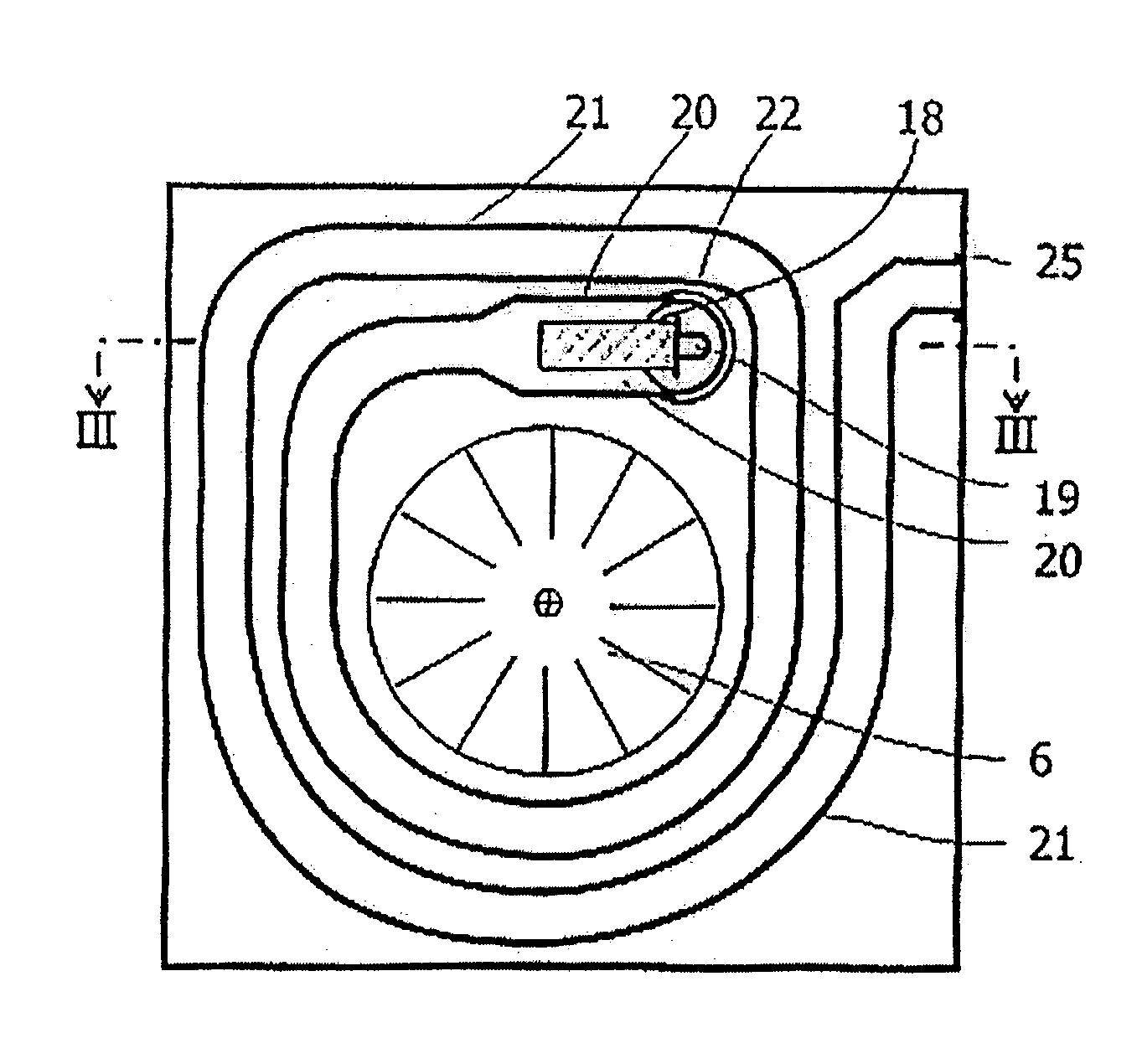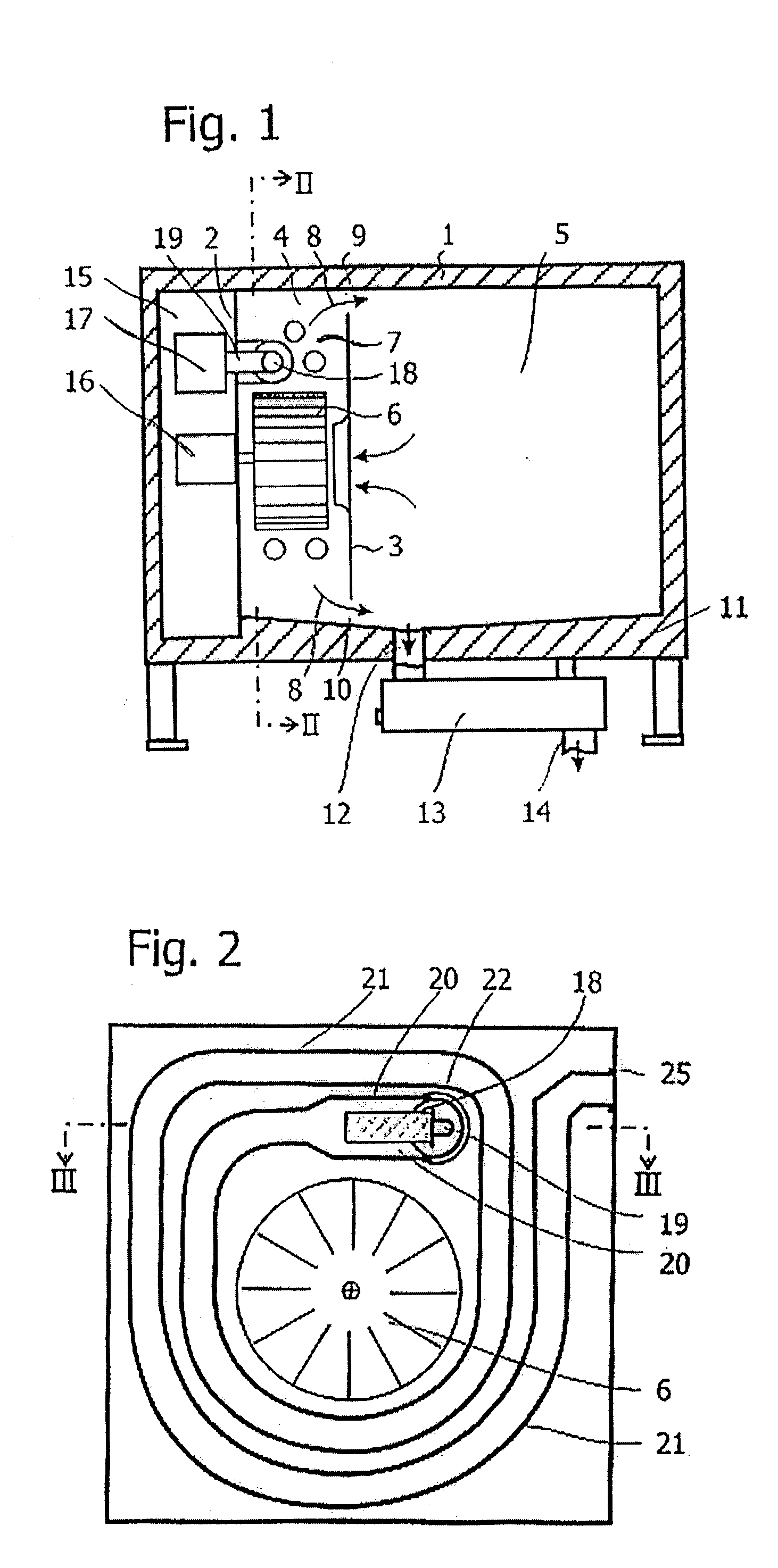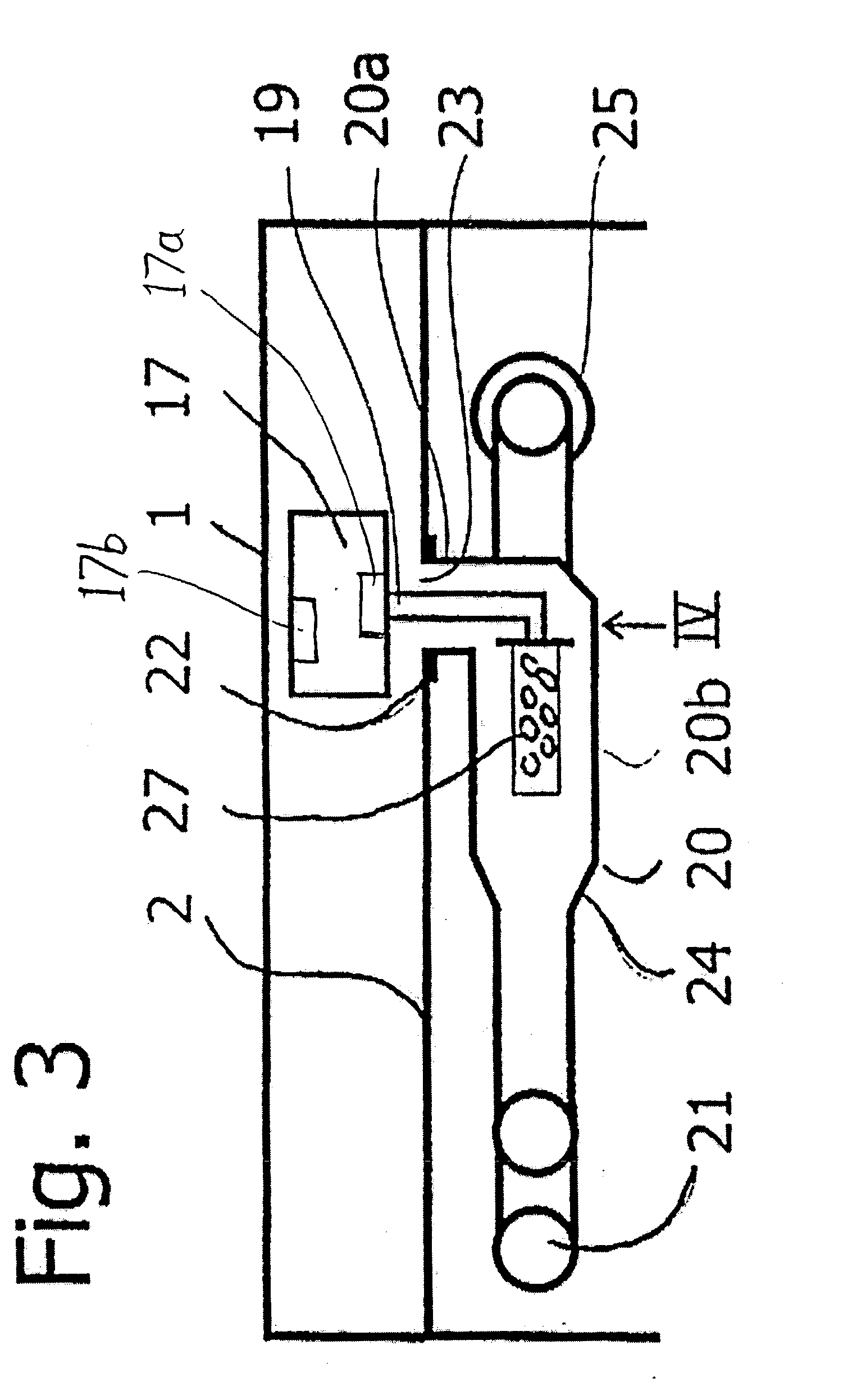Heat exchanger device
a heat exchanger and heat exchanger technology, applied in the field of heat exchanger devices, can solve the problems of sucking up secondary air, long flame, and relative long flame which leaves the burner
- Summary
- Abstract
- Description
- Claims
- Application Information
AI Technical Summary
Benefits of technology
Problems solved by technology
Method used
Image
Examples
Embodiment Construction
[0022] An apparatus for the heat treatment of foodstuffs is referred to as a cooking appliance in the following text. The cooking appliance according to the present invention has a housing 1 which includes a customary front covering (not illustrated) and door. The housing further includes a partition 2 which divides the housing into sections which are separated from one another in a sealed manner. In the one section, a further partition 3 separates a space 4 from a space 5. The space 4 accommodates a fan wheel 6 and a heat exchanger device 7 while the space 5 is used as a cooking space for receiving the foodstuffs to be treated. Steam is introduced into the space 4 by a steam generator (not illustrated), thus producing a steam / air mixture which is blown by the fan wheel 6 in accordance with the arrows 8 through slots 9 and 10 in the partition 3 into the cooking space. This steam / air mixture is heated up by the heat exchanger device 7. A floor 11 of the cooking space 5 opens into an ...
PUM
 Login to View More
Login to View More Abstract
Description
Claims
Application Information
 Login to View More
Login to View More - R&D
- Intellectual Property
- Life Sciences
- Materials
- Tech Scout
- Unparalleled Data Quality
- Higher Quality Content
- 60% Fewer Hallucinations
Browse by: Latest US Patents, China's latest patents, Technical Efficacy Thesaurus, Application Domain, Technology Topic, Popular Technical Reports.
© 2025 PatSnap. All rights reserved.Legal|Privacy policy|Modern Slavery Act Transparency Statement|Sitemap|About US| Contact US: help@patsnap.com



